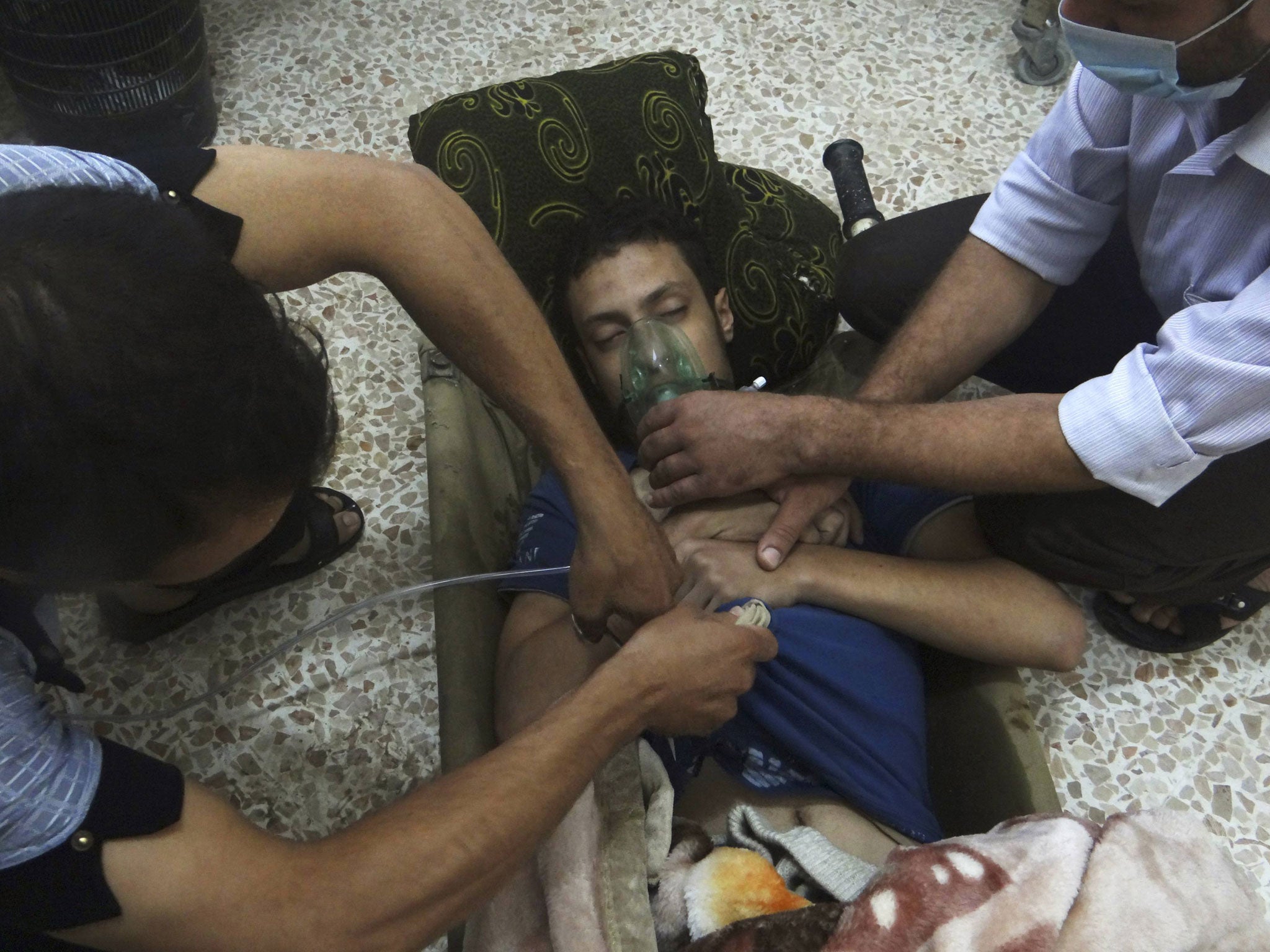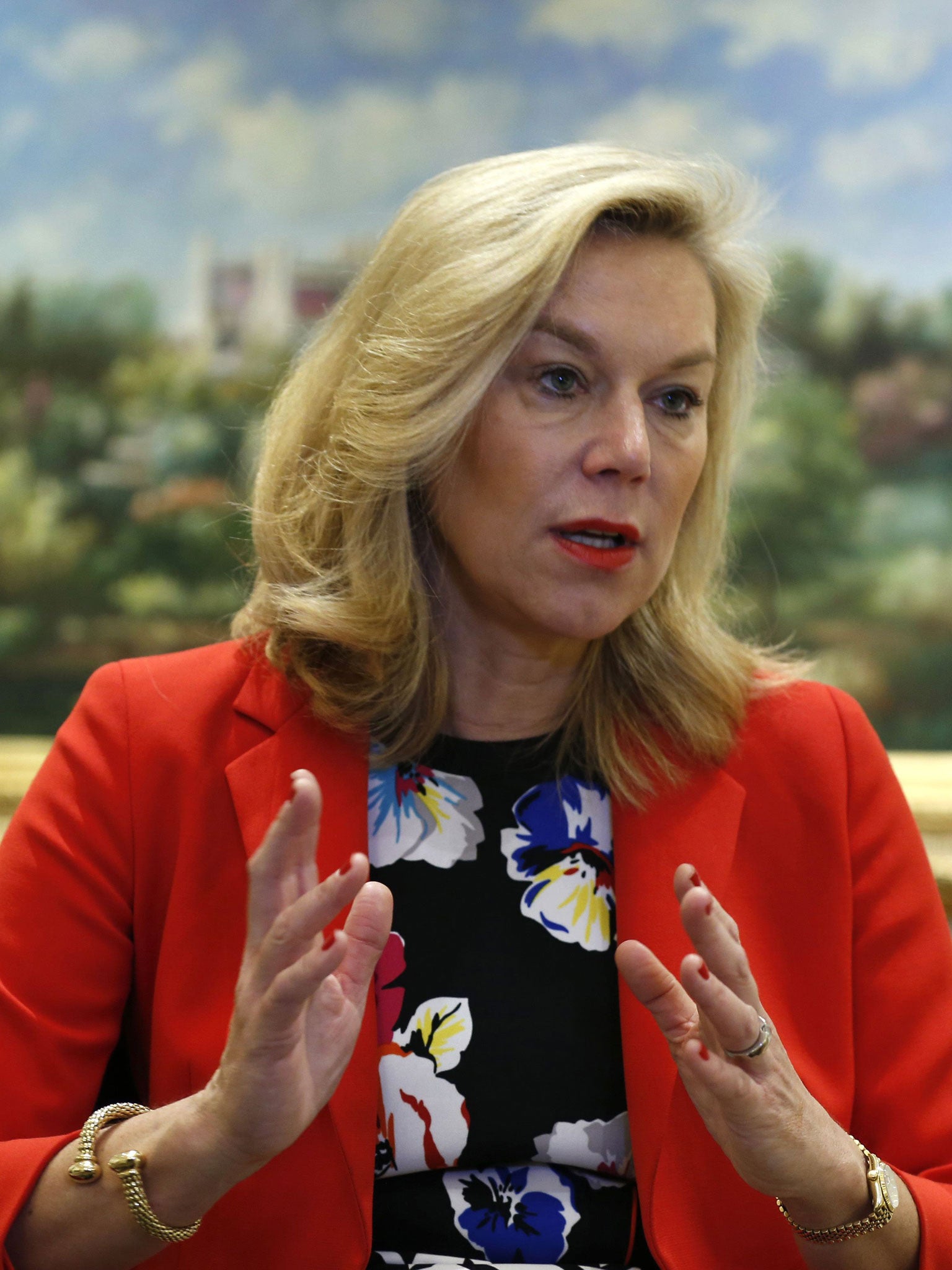Syria's chemical weapons: A third of the most dangerous weapons have been destroyed, including all mustard gas ahead of final UN deadline
The Dutch diplomat overseeing the removal of Syria’s deadly chemical weapons tells Fernande van Tets in Beirut that the mission might be behind schedule, but she is determined it will be completed by the June deadline

Your support helps us to tell the story
From reproductive rights to climate change to Big Tech, The Independent is on the ground when the story is developing. Whether it's investigating the financials of Elon Musk's pro-Trump PAC or producing our latest documentary, 'The A Word', which shines a light on the American women fighting for reproductive rights, we know how important it is to parse out the facts from the messaging.
At such a critical moment in US history, we need reporters on the ground. Your donation allows us to keep sending journalists to speak to both sides of the story.
The Independent is trusted by Americans across the entire political spectrum. And unlike many other quality news outlets, we choose not to lock Americans out of our reporting and analysis with paywalls. We believe quality journalism should be available to everyone, paid for by those who can afford it.
Your support makes all the difference.No more excuses. That’s the message from Sigrid Kaag, the head of the mission to finally rid Syria of its 13,000 tons of chemical weapons.
Every deadline Damascus has so far been set by the international community has been missed, but the pace of destruction has increased over recent weeks in anticipation of a final 30 June deadline. “The Syrian authorities now have everything to finish the job,” says Ms Kaag, the Dutch diplomat who heads the joint mission between the United Nations and the Organisation for the Prohibition of Chemical Weapons (OPCW).
Speaking to The Independent, Ms Kaag insisted that her mission, which also includes the dismantling of 26 chemical weapons production sites, would succeed, and on schedule. “If we keep up the pace, then there is every reason to assume that we will achieve the deadline,” she says. To date, more than half of the chemical weapons stock has been removed from the war-ravaged country and destroyed. “We are almost at 54 per cent and the next few days we will reach 58 per cent, that is a huge jump compared to a month ago,” says Ms Kaag.
She cautioned that this does not include the time frame necessary for destruction of the material. This happens on board the American vessel the Cape Ray, before the remnants are moved on to commercial destruction. That process “has its own timeline”, she said, encompassing 90 days at most. “So to reach the deadline of 30 June, the material needs to be on the Cape Ray within a set time period, preferably as soon as possible, preferably at the beginning or middle of April.”
Ms Kaag added that March is “the critical month” and said the mission wasn’t assuming anything. “The proof of the pudding is in the eating.” The Syrian government, which has been attacked for dragging its feet, has now proposed to complete the removal of all chemicals by late April, 10 weeks behind the original schedule.
So far, every deadline has been missed. A slow start has led to criticism, most notably from US officials. But according to Ms Kaag, previous explanations and excuses for delays no longer hold up. “Deadlines were postponed because of logistics, security, technical aspects, the weather and security. Now all these other issues have been solved through adjustments and through technical solutions.”

In response to requests for help, the OPCW has offered a host of training sessions, ranging from environmental risk and hazardous material management response to emergency response and hazardous packing. “The Syrian authorities now have everything to finish the job,” she says.
The only obstacle remains security and that is a responsibility of Syria, and not the UN-OPCW mission, stresses Ms Kaag.
Last week several rockets landed in the port city of Latakia, from where material is being transported, just hours after Ms Kaag visited. “It’s worrying,” she admits. “Naturally you always worry about the civilian population.”
Earlier this month, a rocket hit close to the hotel where UN-OPCW staff were staying in Latakia. And in January, two chemical weapons convoys were attacked. Damascus has protective containers in which the hazardous material is transported. But such measures are “not a panacea for all evils, that is clear,” admits Ms Kaag.
One third of Syria’s most dangerous weapons have already been destroyed, including all mustard gas. This was the most dangerous to transport because it is stored in the same form as it is deployed in warfare. Components of other agents, such as the sarin gas used in the 21 August attack on Damascus suburbs, which triggered the OPCW-UN mission, are mixed prior to engagement. President Bashar al-Assad agreed, with Russian urging, to give up his chemical weapons in the wake of those attacks, after being threatened by a Western military response.
But even after averting military action, some in Syria are reluctant to put the chemical weapons beyond use. Some, particularly among the rebel groups, hold that the weapons stocks are a deterrent against Israel.
Ms Kaag has visited Turkey, Saudi Arabia and Qatar, who support the rebels, to ensure their support. The opposition Syrian National Coalition is on board, she says, “but of course you have a very fragmented opposition and they have a difference of opinion”.
The destruction of Syria’s 26 chemical weapons facilities is a week behind schedule. OPCW members will meet to determine the fate of nearly half of the sites on Friday. Syria has disputed the necessity of complete destruction of some sites.
The fighting has impeded access to two sites. One, in the Aleppo region, has been damaged beyond operability by fighting. The location of the other site has not been disclosed.
The conflict has entered its fourth year, and more than 140,000 people have died, most as a result of conventional weapons. Recently, the regime has begun using barrel bombs; petroleum vats filled with explosives and shrapnel. They alone have caused more than 20,000 deaths, according to the opposition Syrian National Council.
“The destruction of chemical weapons is ultimately a modest contribution,” admits Ms Kaag. “We hope that the weapons programme is an enabler, but not more than that.”
Join our commenting forum
Join thought-provoking conversations, follow other Independent readers and see their replies
Comments